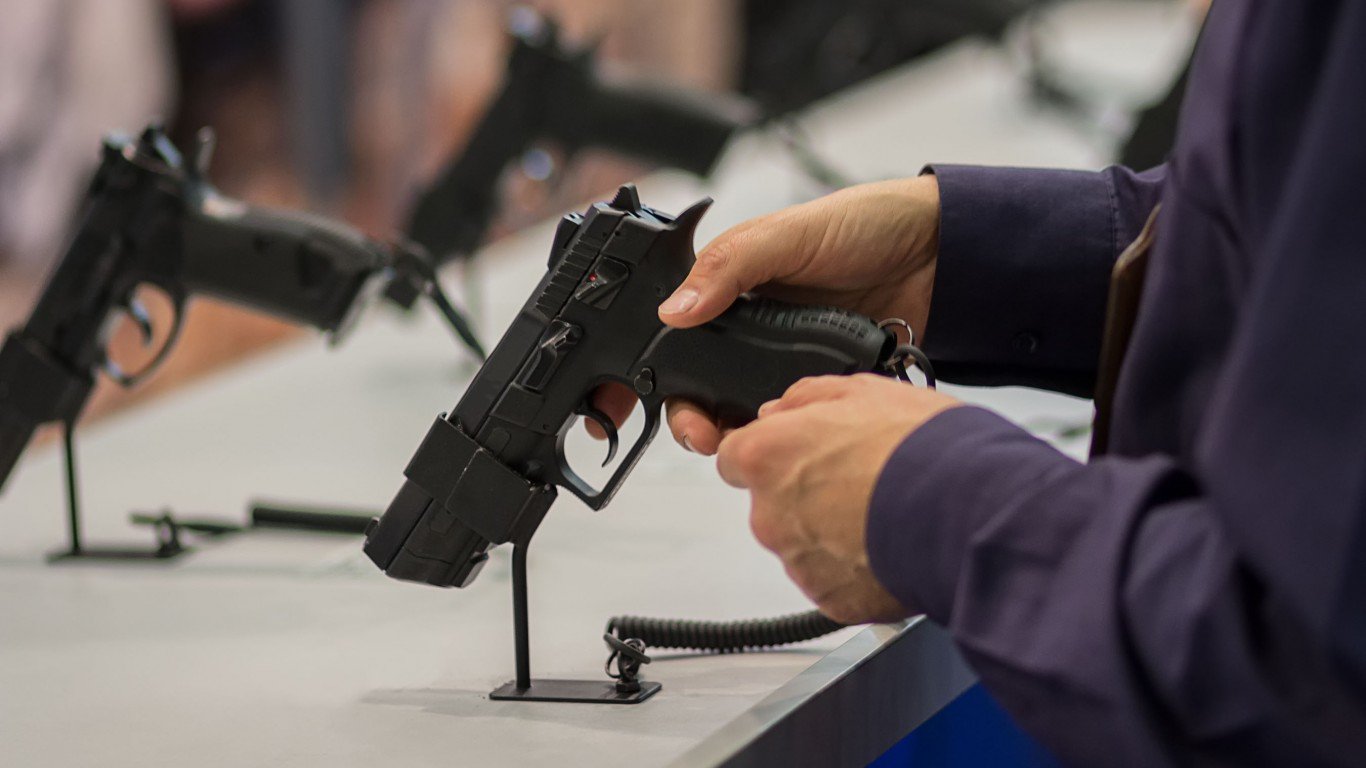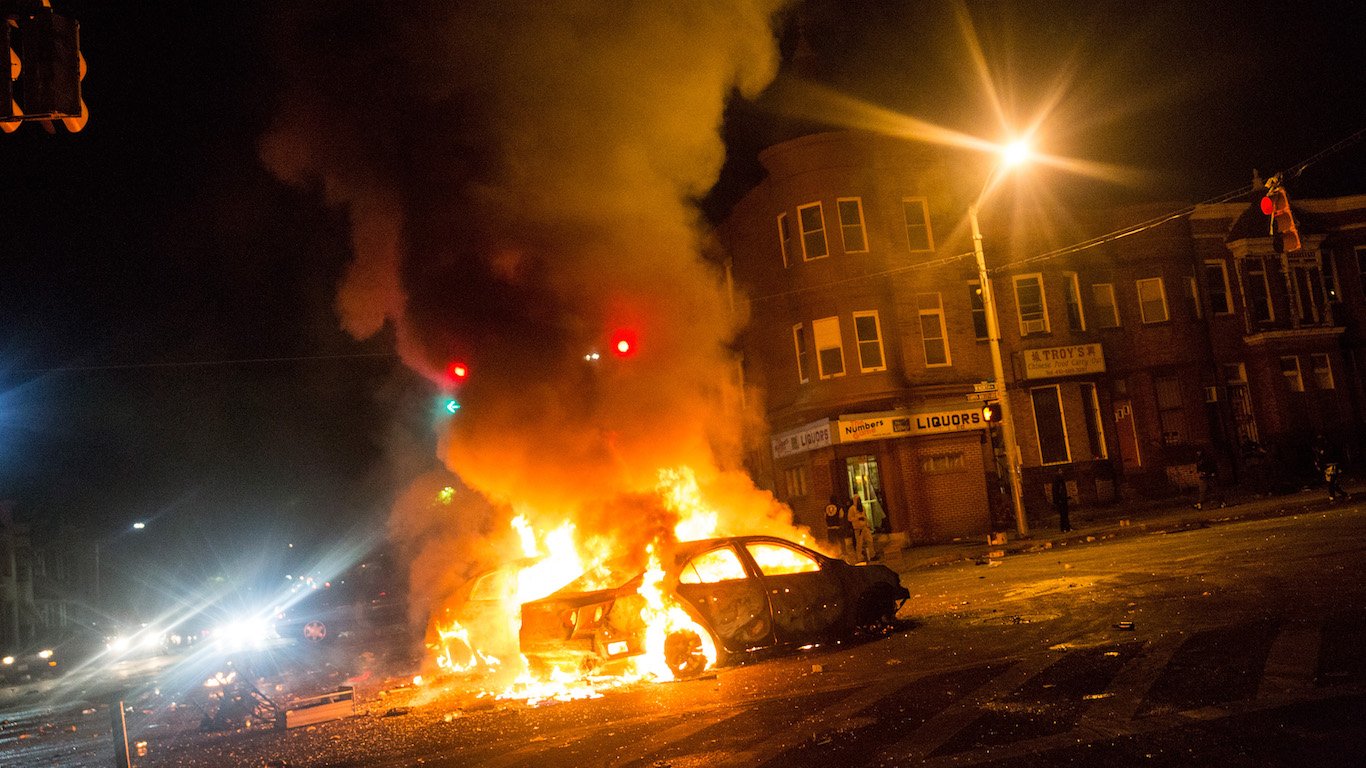

On Wednesday, Dick’s Sporting Goods Inc. (NYSE: DKS) reported better than expected first-quarter results and the stock dropped 5.9%. Thursday morning, Sportsman’s Warehouse Holdings Inc. (NASDAQ: SPWH) missed first-quarter revenue and income estimates, posting a 3.4% decline in revenues and an adjusted net loss per share of $0.12, compared to an expected loss per share of $0.09. Same-store sales were down 5.7% year over year.
Sportsman’s Warehouse operates 92 stores in 23 states and had a market cap as of Wednesday’s closing bell of about $168.5 million. Dick’s has nearly eight times as many stores and a market cap of about $3.2 billion.
Guns and ammunition, in fact, got the blame for Sportsman’s poor first-quarter results. The company said that the revenue decline was the result of “difficult event-driven comparisons in the firearm and ammunition categories in the first quarter of fiscal year 2018.” The “event” in question was the Valentine’s Day school shooting at Parkland, Florida’s, Marjory Stoneman Douglas High School that claimed the lives of 17 students and faculty. That was just one of dozens of mass shootings that have occurred since the one at Colorado’s Columbine High School in April 1999.
Sales of guns and ammo soared in the weeks following the shooting. Sportsman’s posted a 9.3% year-over-year increase in first-quarter 2018 ammo sales. In the fourth quarter of 2017, ammo sales had dropped by 4.7% year over year. Gun sales jumped nearly 15% in the 2018 first quarter and same-store sales of guns jumped 17.5%.
Sportsman’s Chief Financial Officer Kevan Talbot commented at the time that although the company would benefit in the second quarter of 2018, the firm didn’t “expect the same level of firearm demand going forward as we saw in Q1 given some pull forward that also occurred at the same time.” Dick’s stopped selling most semi-automatic rifles following the Parkland shooting, and other stores halted sales of specific guns or raised the age for buyers of certain kinds of guns.
The temporary boom in gun sales lasted about two and a half months. According to the FBI’s National Instant Criminal Background Check System (NICS) data, the agency received 2.33 million requests for background checks in February 2018, up by about 110,000 year over year; 2.8 million requests in March, up by about 400,000; and 2.2 million requests in April, up by about 200,000. For the full year, requests rose from 25.24 million in 2017 to 26.18 million in 2018.
In its 2018 annual report, gunmaker Ruger used NICS data adjusted by the National Shooting Sports Foundation (NSSF) to exclude checks for administrative reasons, such as ensuring that a buyer is still eligible to purchase a gun. According to NSSF’s tabulation, background checks for potential new owners fell by 6% year over year, from 13.97 million in 2017 to 13.12 million in 2018.
In the first quarter of 2019, Ruger reported that NSSF’s count on background checks fell from 3.8 million to 3.4 million sequentially and from 3.7 million year over year. Unit sales through distributors to retailers fell from 509,500 in the first quarter of last year to 347,100 in the first quarter of this year.
Why the decline? According to a December report from Pew Research, one reason could be that most gun owners already own all the guns they want. Nearly two-thirds (66%) of Americans who own a gun report that they own more than one, and nearly 30% say they own five or more.
Donald Trump’s 2016 election was expected to depress gun sales. NICS background check requests spiked to 27.6 million in 2016, the last year of the Obama administration and ahead of an expected Hillary Clinton administration. NSSF’s adjusted count for new owners totaled 15.3 million in 2016. The threat of tighter restrictions on gun purchases drove sales higher, but Trump’s election removed that incentive. The duration of the Trump slump in gun sales has been longer than expected and shows little sign of ending any time soon.
Finally, the well-publicized turmoil that has surfaced within the National Rifle Association (NRA) hasn’t helped gun sales either. The organization is under investigation in New York for using funds from its charitable foundation to fund the NRA’s political activities. Both the foundation and the NRA are tax-exempt, but only contributions to the foundation are tax-deductible. Using foundation funds to pay for NRA operations would be illegal. To top it off, dues collections fell to $128 million in 2017, their lowest level since 2012. Without funds to maintain its public presence, the NRA loses a lot of its punch with both its members and, what’s worse, its political support may be threatened.
Banning gun sales at its stores has not hurt Dick’s; maintaining gun sales at Sportsman’s has not helped it. Sportsman’s shares traded down more than 9% after its report, while Dick’s stock traded up marginally, making up for at least some of Wednesday’s losses.
A recent study has shown that guns kill more children than on-duty police officers and active members of the military combined. The data covered a period between 1999 and 2017. Race and gender were also major issues. In terms of overall number of homicides in the United States, these are the cities with the most gun violence.
Thank you for reading! Have some feedback for us?
Contact the 24/7 Wall St. editorial team.
 24/7 Wall St.
24/7 Wall St.


